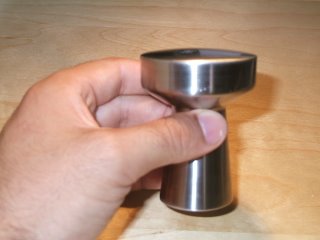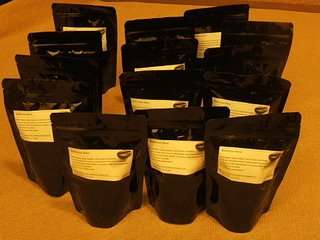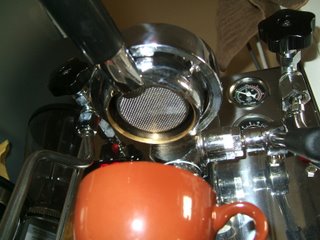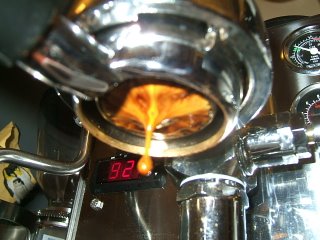I've been doing the experiments on tamping, no tamping and how they work using a naked portofilter.
Why haven't I published anything yet? Experience. Trying to give it all a fair shot.
Extracting espresso is not an easy thing to get right, there is definitely a real level of competency that needs to be achieved before I am going to give an opinion of if tamping is required or not. I love experimenting with lots of thing... temperature of extraction, coffee aging, particle size, density of puck/dose vs. particle size... and now tamping.
When I started the experiment on the tampless extraction I quickly realised that if this was going to be fair then I would have to invest time in attempting to find a way to become competent enough to find out if it was as at least as good as a tamped extraction. Reminded me of Myth-busters, if it was possible I was going to do it. Hence the delay in publishing any of the results.
Introduction To The ExperimentFirstly, what is tamping? Tamping is using a device to compress ground coffee into the basket/handle (portofilter) of an espresso machine.
There are many kinds of tampers, from plastic to custom made. Here’s an average stainless steel one that I use, it has a curve base.

There is some debate on the net about if tamping is necessary at all. So far the experiments that I’ve seen and accompanying photos have not convinced me.
What they have seemed to be focused on is time of extraction for a 30ml shot. Importantly they have not combined a ‘naked’ to look for the quality of extraction. To my mind it's about quality, because that’s what coffee is all about, and definitely not timing.
I always believed it was possible to get a 30ml/30sec extraction but the photos (that I've seen) saying it wasn’t necessary to tamp all have spouts on the portofilter some blonding/channeling, differences in crema (just one indicator) and uneven pours from spouts.
Now the experiment is extremely subjective because there are so many variables involved , but the results from it will hopefully be good enough that they will be reproducible for the average person.
It will be all over by next weekend. I hope people like the experiment and hope it adds something to the topic area.














 Una Ristretto
Una Ristretto




